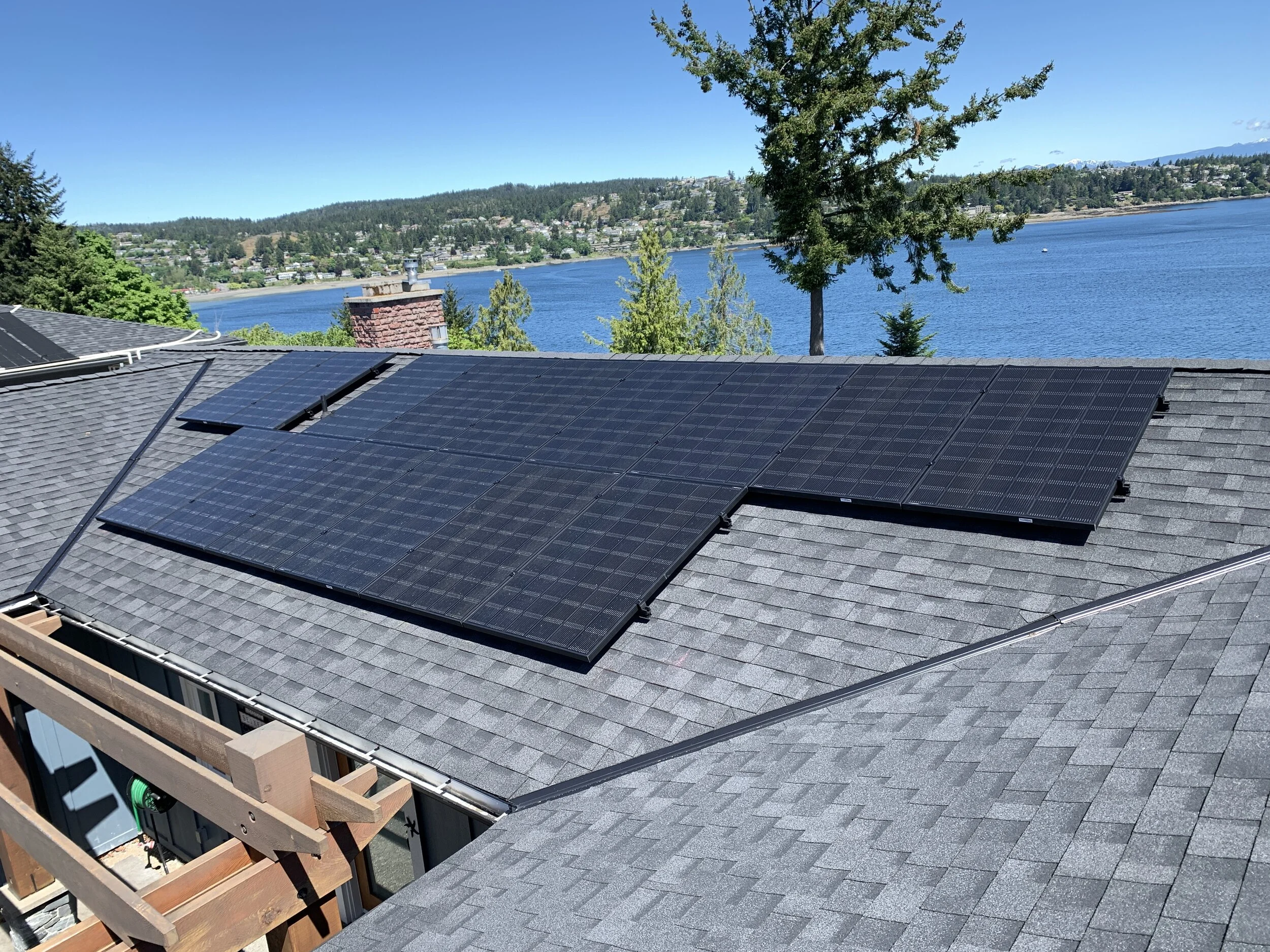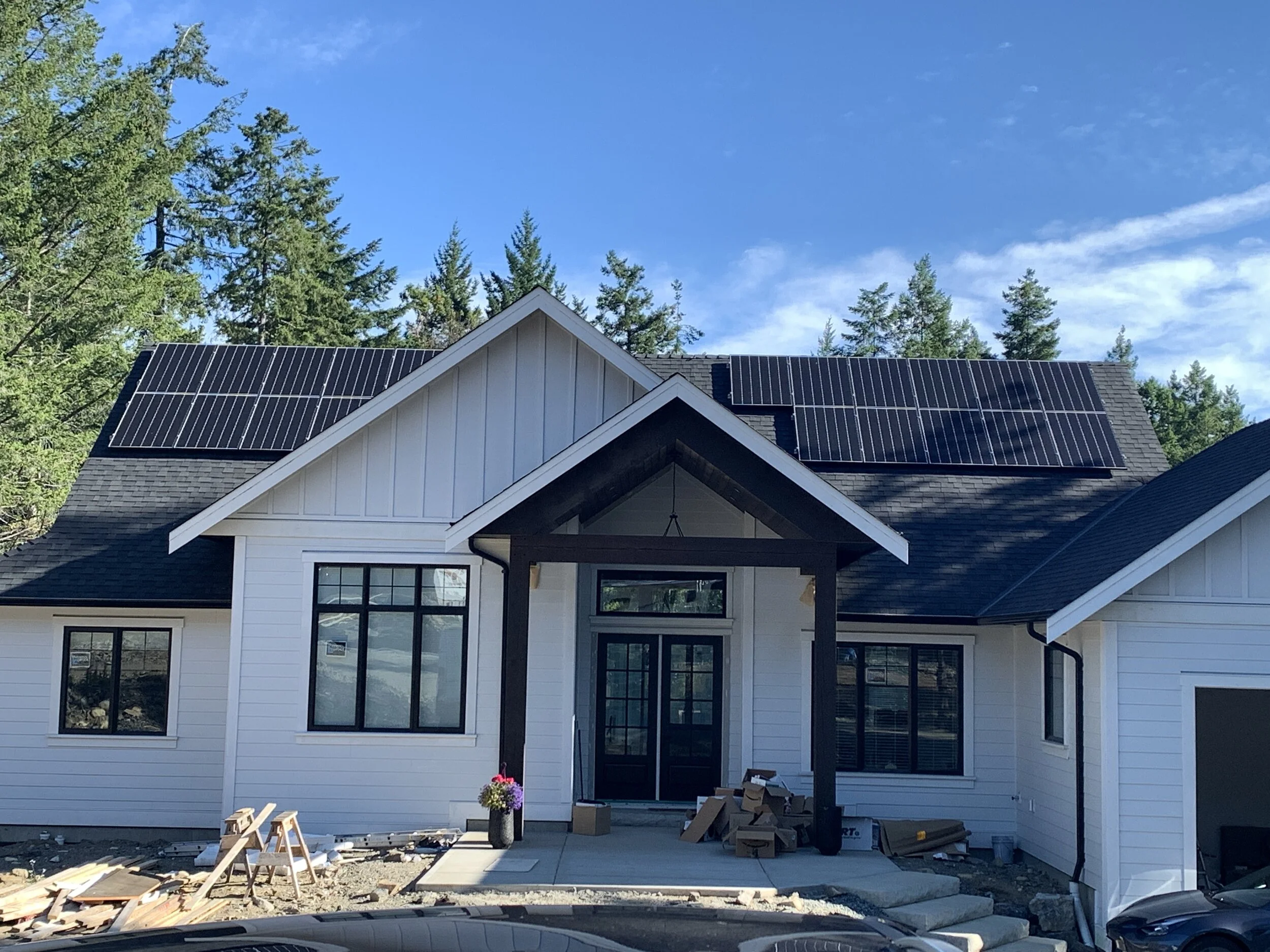
Residential Solar
Here at High Tide Energy we believe in a renewable future. With years of experience in the solar industry, we will provide you with expert system design and installation, that is tailored to your electrical needs and budget.
Get in touch with our expert design team today.
Start Saving.
Solar panels are the answer to expensive residential electrical bills. With solar panels having an average lifespan of 25 years and little to no maintenance fees, home owners can expect huge savings over their systems lifetime.
Reduce Emissions.
The world is quickly adopting more renewable energy to offset the detrimental effects of climate change. Solar is one of the main players in this transition. Solar provides clean, renewable, and sustainable energy without the harmful emissions that result from fossil fuels. With their simple and robust design, home owners can expect to power their homes for over 25 years with little to no worries of failure, minimizing waste and maximizing energy production.
Take Back Your Independence
The cost of electricity fluctuates outside of the your control, however, by going solar home owners can bypass this volatile energy market and independently produce their own electricity. Never worry about expensive electricity prices again by installing solar.
The Canada Greener Homes Grant
The Government has just released a new grant offering homes up to $5000.00 in home energy retrofits. In terms of solar that means you could get up to $1000.00 for every kWh you install! To find out more visit The Canada Greener Homes Grant.

How Does a PV System Work?
Solar Energy
The sun emits photons that excites the atoms that make up the solar panels. This causes the atoms to release electrons, which produces electricity.
The Inverter
The electricity produced from the panels is DC (direct current), but homes are mainly run on AC (alternating current). The inverters job is to change this DC electricity to AC.
Home Energy
This AC electricity is what powers appliances, outlets, lights and any other electrical devices interconnected to the homes electrical system.
Excess Energy
In the summer months your panels may produce more electricity then your house needs. This excess energy is then pulled into the grid in return for credits. This is known as Net Metering.
Net Metering
BC Hydro will provide Net Metering credits for each kWh of excess solar pushed into the grid.
These credits are absorbed at each billing cycle for the exact amount of electricity absorbed by the grid.
Home owners only pay for the electricity their net metering credits could not cover.
If you have a surplus of credits after your monthly billing cycle, the credits will transfer over to the next months bill.
The result of Net Metering is lower monthly electrical bills and a significantly lower chance of reaching Step 2 electrical rates.
A Solar Install With High Tide Energy Inc.
1. Inquiry
The first step to any solar install is the inquiry. Send us your contact information to begin the conversation. Provide us with your ideas, or simply ask a few questions, whatever your reason we will make sure to get back to you as quickly as possible.
2. Discussion
Once we receive your email, that is when the discussion begins. We will answer any questions you may have, and provide you with details regarding the benefits to a solar install. Whether you are just looking for a little information on a project, or looking to get solar installed on your home, we will be happy to talk.
3. Site Visit
Once you decide to proceed with a solar install, we will send one of our licensed electricians to gather information on your house, and answer any extra questions you may have. From this trip we will perform a shading analysis, determine the size of your roof and the direction it is facing, and determine whether or not your electrical system is equipped to include solar.
4. Quote
Once the Site Analysis is complete, we will send the information to our in house design team. Our expert team will do a comprehensive review of your properties solar efficiency, and tailor design you a PV System that will suit your electrical needs and budget. At this point in time we may ask you to provide us with your annual electrical usage so we know exactly how much electricity your house will need to offset.
5. Schedule
Once you are satisfied with one of our system designs, we will set up an install date that works for you. Before we install the system we will need to pull the permits associated with your municipal area, and gather your BC Hydro Information so we can begin the Net Metering application process. To learn more about the benefits of net metering click here.
6. Install
On the install date our technicians will meet you on site. They will swap out any electrical equipment that will not support solar, and move forward with the install. Meanwhile our in house support team will design the single line drawing associated with your system, and complete the net metering process. Due to wait times associated with BC Hydro, this may take up to 8 weeks for large PV systems.
7. Setup
Once your system is complete, we will commission it with you and make sure to answer any questions you may have about running your system. At this point they will register the inverters, and set you up with your monitoring app, so you can see your system report real time 24/7. Furthermore once the net metering application has been processed, your BC Hydro bill will change to incorporate solar into your next payment.
8. Monitor
Finally once your system is complete, we will continue to monitor it weekly. If we notice your system go down we will let you know, and work to find a solution as quickly as possible. Furthermore our administration team will follow up with you after two weeks to confirm that you are satisfied with our install.
Grid Tied Photovoltaic Systems
Micro-Inverter
Grid Tied Micro-inverter based systems are the best of the best in the solar industry. These systems include individual MPPT’s (maximum power point trackers) at each module that are able to maximize the amount of power each panel is producing, and ensure the system is not bottlenecked by the panel with the least efficiency (a common problem with string inverters). Furthermore, microinverter systems offer panel level reporting, so you can see exactly how much power each individual panel is producing.
String Inverter + DC Optimizer
By incorporating Direct Current Optimizers that contain MPPT’s (maximum power point trackers) at each module, a string inverter such as SolarEdge SE7600H can offer power production rates similar to that of micro inverters. This is because they are not limited to the least efficient panel. Furthermore, this system allows for module level reporting, just like the Micro-Inverter systems, so you can track your systems production real-time 24/7.
Independent String Inverter
An independent string inverter is the most cost effective solution for your residential solar install. By incorporating a single inverter you are cutting out a significant number of failure points, ensuring reliability and efficiency throughout your systems lifetime. An issue often associated with independent string inverter systems is the fact that they are limited by their most inefficient panel, however since most homes in Victoria have pitched roofs, the rain will clean any dirt off your system in no time. Produce more, at a price you can afford with independent string inverters.
Our Residential Projects















